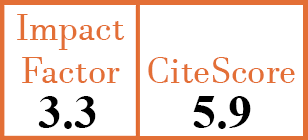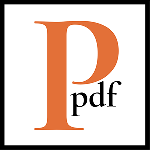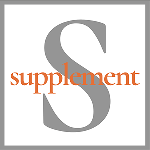Full Papers
Anti-SSB antibodies promotes interleukin-6 production in monocytes through a toll-like receptor4-dependent way in systemic lupus erythematosus
S.-Y. Lu1, X.-M. You2, F.-Q. Hu3, X.-B. Mi4, C.-P. Guo5, G.-Z. Tan6, L. Wang7
- Department of Dermatology, Sun Yat-sen Memorial Hospital, Sun Yat-sen University, Guangzhou, China.
- Department of Dermatology, Sun Yat-sen Memorial Hospital, Sun Yat-sen University, Guangzhou, China.
- Department of Dermatology, Nanfang Hospital, Southern Medical University, Guangzhou, China.
- Department of Dermatology, Zhujiang Hospital, Southern Medical University, Guangzhou, China.
- Department of Dermatology, Sun Yat-sen Memorial Hospital, Sun Yat-sen University, Guangzhou, China.
- Department of Dermatology, Sun Yat-sen Memorial Hospital, Sun Yat-sen University, Guangzhou, China.
- Department of Dermatology, Sun Yat-sen Memorial Hospital, Sun Yat-sen University, Guangzhou, China. wliangch@mail.sysu.edu.cn
CER18625
Full Papers
PMID: 40693415 [PubMed]
Received: 13/02/2025
Accepted : 03/07/2025
In Press: 21/07/2025
Abstract
OBJECTIVES:
The interaction of autoantibodies with solid tissues has been extensively studied in systemic lupus erythematosus (SLE), but their interaction with peripheral blood mononuclear cells (PBMCs) remains poorly understood. This study aimed to investigate the effects of autoantibodies on PBMCs in SLE.
METHODS:
We enrolled 31 SLE patients and 35 healthy controls. Serum antibodies recognising PBMC antigens were assessed by immunoblotting using membrane and cytoplasmic proteins isolated from PBMCs. PBMC antigens were identified by mass spectrometry. The effects of autoantibodies on PBMCs were evaluated using flow cytometry, quantitative real-time PCR (qPCR), and enzyme-linked immunosorbent assay (ELISA).
RESULTS:
Antibodies targeting a 55-kDa autoantigen were detected in 48.8% of SLE patients. Mass spectrometry identified SSB (La) protein as one of the potential antigens recognised by these autoantibodies, consistent with the strong association between anti-SSB antibodies and anti-55-kDa antibodies in clinical data. Anti-SSB antibodies exhibited significantly higher binding affinity to PBMCs compared to isotype IgG (23.0% vs. 10.6%, p<0.0001). Furthermore, anti-SSB antibodies promoted the mRNA expression of TNF-α, IL-1β, IL-4, and IL-6 in PBMCs, with IL-6 showing a more than 100-fold increase (p<0.001). The expression of IL-6 was suppressed by resatorvid, a TLR4 inhibitor. CD14-positive monocytes were identified as the primary source of IL-6 in PBMCs stimulated by anti-SSB antibodies.
CONCLUSIONS:
Our findings demonstrate that anti-SSB antibodies promote cytokine production, particularly IL-6, in monocytes through a TLR4-dependent mechanism.



